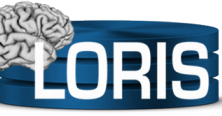Loris

More than 1 neuroimaging paper is published every hour. But we can keep up with the literature if we do it all together!
Summary
Longitudinal Online Research and Imaging System (LORIS ; Das et al., 2011) is a modular and extensible web-based data management system that integrates all aspects of a multi-center study: from management of the acquisition of heterogeneous data (imaging, clinical, behavior, and genetics) to storage, processing, and ultimately dissemination. LORIS began as the infrastructure for the NIH MRI Study of Normal Brain Development (Evans et al., 2006) and later became the data management system for numerous multi-center studies, in both neurodevelopment and neurodegeneration, such as IBIS, GUSTO, NeuroDevNet, Prevent-AD, CCNA, MAVAN, IBRAIN in India, k-ADNI in Korea, amongst many others. In Europe, LORIS supports NeuGRID, AddNeuroMed, the 1000 Brains Project and is an international partner of the Human Brain Project. LORIS is under constant development and will be looking forward to engage with new collaborators to further optimize the existing platform and develop new features, including a greater mobile presence.
What can I do?
We will have a number of hackathon specific goals related to our overall codebase. For example, we will be pushing forward on creating tablet specific interfaces making use of extended HTML 5 web capabilities, and possibly web application compilers such as PhoneGap and Titianium. We will also be looking to create new modules related to imaging-genomics data management. While LORIS runs on a PHP/MySQL framework, we will be further exploring Javascript, CSS and other web technologies. As such, we will offer tutorials at the conference for those interested in collaborating. For more background information about LORIS, feel free to see our paper in Frontiers of Neuroinformatics and visit loris.ca for more infomation.
What to do:
Your task will be to pick papers to tag (there’s either a random list of papers, you can search papers from your field, or tag your own papers), read the full text, tell us if you agree or not with the tags already entered, give us information about the stereotaxic space used by the article, and an approximation of the number of subjects in the study. If you are into web programming, the BrainSpell client runs on javascript, jQuery, WebGL, the server runs on mySQL and PHP, and there are plenty of things to do!
How to join:
For the enthusiast, you can start tagging already! Go to http://brainspell.org open an account, and go for it. More information about BrainSpell can be found in our blog. If you have any ideas, you can contact Roberto Toro by e-mail rto@pasteur.fr.
